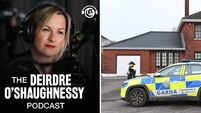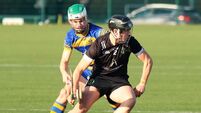Maternal death inquest must result in rethink in care for mothers

Nayyab Tariq died after a heart attack following post-partum haemorrhage, retained placenta, bleeding arising from ectopic deciduosis, and shock.
Findings from an inquest and hospital review into the death of a woman just hours after giving birth must provide learning for the medical community, bereaved families and campaigners have said.
One leading community advocate has also called urgently for “diversity training for healthcare workers” following the hospital review finding the colour of Ms Nayyab Tariq’s skin was one factor in delays to her care.
The inquest was the first into a maternal death following the passing of legislation making this mandatory.
Coroner Patrick O’Connor recorded a verdict of medical misadventure, and the inquest heard she died after a heart attack following post-partum haemorrhage, retained placenta, bleeding arising from ectopic deciduosis, and shock.
In addition, an as-yet-unpublished review of her care found clinical delays in recognising she was in shock at the heart of the case which “may have contributed” to her death.
The review, seen by the , notes a number of signs Ms Tariq was in shock due to internal un-seen bleeding were missed because of failures in communication and record-keeping.
It found, in relation to changing skin colour, which is one sign of shock: “Skin pallor was initially less obvious due to ethnicity.”
Diane Ihirwe, social worker, community builder, and advocate said she was “horrified” reading about this case during the week.
“They agreed one reason this woman died was because they didn’t know she was going pale, but there is no recommendation for anti-racism training or a diversity strategy,” she said.
“Really if we mattered there would be at least one recommendation for staff or for how they teach, they would include some diversity training for people to realise this is a risk."
Chair of maternity advocacy group AIMS Ireland, Kyrisa Lynch, said: “This is another maternal death in the migrant community. Ireland's maternal death rate, whilst within expected parameters for a developed country is disproportionately populated with non-Irish women.”
AIMS has previously called for research into this, and she said they again call on the Health Minister Stephen Donnelly to do this.
It is understood there is also concern in the medical community at the disproportionate number of migrant women who have died in the maternity services, with the growing number of inquests revealing hidden problems.
Improved access to all maternity-related inquests, including that in Drogheda this week which recorded a verdict of medical misadventure into the death of Baby Willow Clarke in 2018, has been welcomed.
In the case of Dhara Kivlehan, originally from India, who died in 2010 one week after giving birth in Sligo hospital, it was 2014 before her inquest was held.
In those four years, another woman, Sally Rowlette, who had a similar health condition, died giving birth at the same hospital.
Their deaths and the drawn-out battle to be heard in a coroner’s court spurred the two bereaved husbands to join with a campaign, the Elephant Collective, calling for mandatory inquests.
Between 2008 and 2014, a verdict of medical misadventure was returned on eight deaths, but campaigners were aware of other unheard cases.
Sally’s husband Seán Rowlette attended Swinford courthouse this week to support Mr Ul Hassan.
He told the it was a “relief” to see the family did not have to fight for an inquest in the way he had.
“We were fighting for 15 months [to get an inquest] and I know of other people years fighting for it," he said.
Mr Rowlette welcomed the coroner’s verdict, noting the HSE’s legal team had argued strongly for a finding of natural causes.
Founding member of the inquest campaign and author of ‘Untangling the Maternity Crisis’, Dr Jo Murphy-Lawless, also supported Mr Ul Hassan.
“This has been a terrible week for maternity services in Ireland, for pregnant women, for new mothers, and for their families,” she said.
She said inquests are a public record and also enable “further learning in the wider medical community”.
“AIMS asks the medical community to make public and widely available the learning from this case,” she urged.
This learning will come mainly from the review commissioned by the SAOLTA Hospital Group, which oversees Mayo hospital and is chaired by Dr Carmen Regan, an obstetrician at the Coombe Hospital in Dublin.
It concludes: “The review panel found that there were systems of care/service issues which may have contributed to Mrs A’s death. Earlier recognition and intervention may have altered the outcome in this case.”
Among the key clinical issues identified was the “delay in recognition and treatment of shock due to haemorrhage”.
Midwives recorded a blood loss of 500ml when Ms Tariq was transferred from the delivery room to the operating theatre to have her retained placenta removed one hour after giving birth.
But Ms Tariq’s husband gave evidence he saw “a pool of blood” on the floor and raised this with a female staff member at the time; medical witnesses denied seeing this.

The hospital’s legal team submitted up to 25 people were involved in Ms Tariq’s care; 18 people, including the pathologist, gave evidence.
Obstetrician Dr Anca Trulea told the inquest it was not until 8pm staff realised the recorded blood loss was not consistent with Ms Tariq’s condition.
It is understood that while HSE guidelines say blood loss of up to 500ml is considered a “minor” post-partum haemorrhage, usually staff would not wait until the measurement went over 500ml before reacting with emergency procedures.
It is understood while internal bleeding is uncommon, hospitals in Ireland would experience this and obstetric staff would be aware of it.
However, senior obstetrician Dr Meabh Ní Bhuinneann was not called on until after 8:22pm. Surgery, which the inquest heard is the only way to identify this type of bleeding, was done at 8:50pm under her supervision.
The hospital review highlights “failures in communication” at many stages with staff unaware of the growing risk of shock including a gap of 25 minutes when no blood pressure was recorded.










